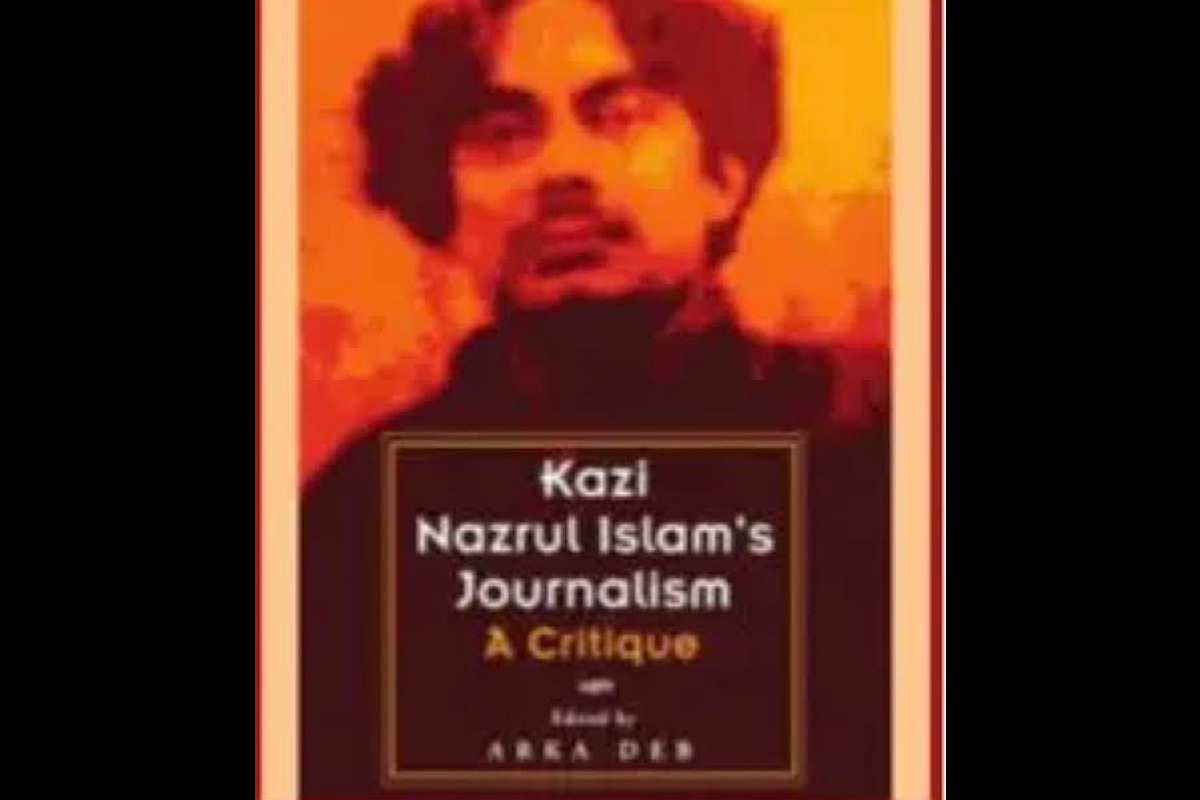Strategic Outreach
The BJP's latest engagement with Muslims through Ramadan goodwill kits ahead of Eid has sparked debate across political circles.
A book titled Kazi Nazrul Islam’s Journalism A Critiquehas created a flutter in the academic circles, both in the country and Bangladesh before the poet’s birth anniversary which falls tomorrow.
Tarun Goswami | Kolkata | May 26, 2023 12:55 pm

Kazi Nazrul Islam’s Journalism (photo:SNS)
A book titled Kazi Nazrul Islam’s Journalism A Critiquehas created a flutter in the academic circles, both in the country and Bangladesh before the poet’s birth anniversary which falls tomorrow.
The Bengal government has organized a programme to celebrate the occasion at Nazrul Tirtha in New Town tomorrow. A four-day long programme will be held at Rabindra Sadan, Ektara Mukta Mancha, Sishir Mancha and Bangla Academy. In Bangladesh programmes will be held to celebrate the birth anniversary of their national poet.
Advertisement
The book edited by Arka Deb, a journalist, is a prized possession as it deals with a lesser known facet of Nazrul’s life (1899-1976). Few people know that Nazrul co-edited Nabajug, a daily newspaper with Muzaffar Ahmed. The newspaper was launched on 12 July, 1920.
Advertisement
When the 49th Bengali regiment was dissolved by the British government, Nazrul moved to Kolkata and started staying with Shailajananda Mukhopadhyay.
After a couple of days, the help refused to wash Nazrul’s plates after he found that the poet was a Muslim. Nazrul then moved to 32 College Street and started staying with Muzaffar Ahmed.
Nabajug was banned by the British government as the paper had advertised for the Khilafat movement. Nazrul had worked for five months in Nabajug but the editorials written by him during this period could not be traced.
A book containing selected editorials titled Jugobani was published in 1922, which was also banned by the British. Nazrul had worked for a month in a newspaper called Sebak. However, he quit after the editor had curtailed his freedom of expression.
Nazrul joined Dhumketu as the editor, which was funded by Masood Ahmed. The newspaper supported the revolutionary movements and shook the society. Its last issue was published on 27 January, 1923. Nazrul’s famous poem Anandamoyeer Agomone was published in Dhumketu for which he was arrested from Kulillah, now in Bangladesh, on 23 November, 1922. Nazrul’s essay Baunduler Atmakahi, on his experiences as a member of the 49th battalion of Bengali Regiment, was published in Saugat and it had received accolades from all quarters.
Nazrul had earned best wishes from Rabindranath Tagore, Sarat Chandra Chattopadhyay, Chittaranjan Das among others. Nazrul was appointed as the editor of Nabajug, which was re-launched by Fazlul Haq as a morning newspaper in 1941.
Nazrul had edited Langol, which took up problems faced by the farmers and wrote articles in Ganabani. It was one of the earliest newspapers in the country that had highlighted the oppression on farmers.
In May 1942, Nazrul faced problems with his speech at a radio broadcast and on 9 July, 1942 during a radio broadcast he lost his voice completely which he could not regain.
Advertisement
The BJP's latest engagement with Muslims through Ramadan goodwill kits ahead of Eid has sparked debate across political circles.
In Bhopal, Shahar Qazi Mushtaq Ali Nadvi Sahab and Shahar Mufti Maulana Mufti Abdul Kalam Sahab offered namaz sporting black armbands.
The Mahakumbh may be over, but the questions and debates surrounding it are yet to end. There are questions such as if a holy dip actually washes away all your sins and takes you along the path to heaven straight away, let alone giving you immortality.
Advertisement
